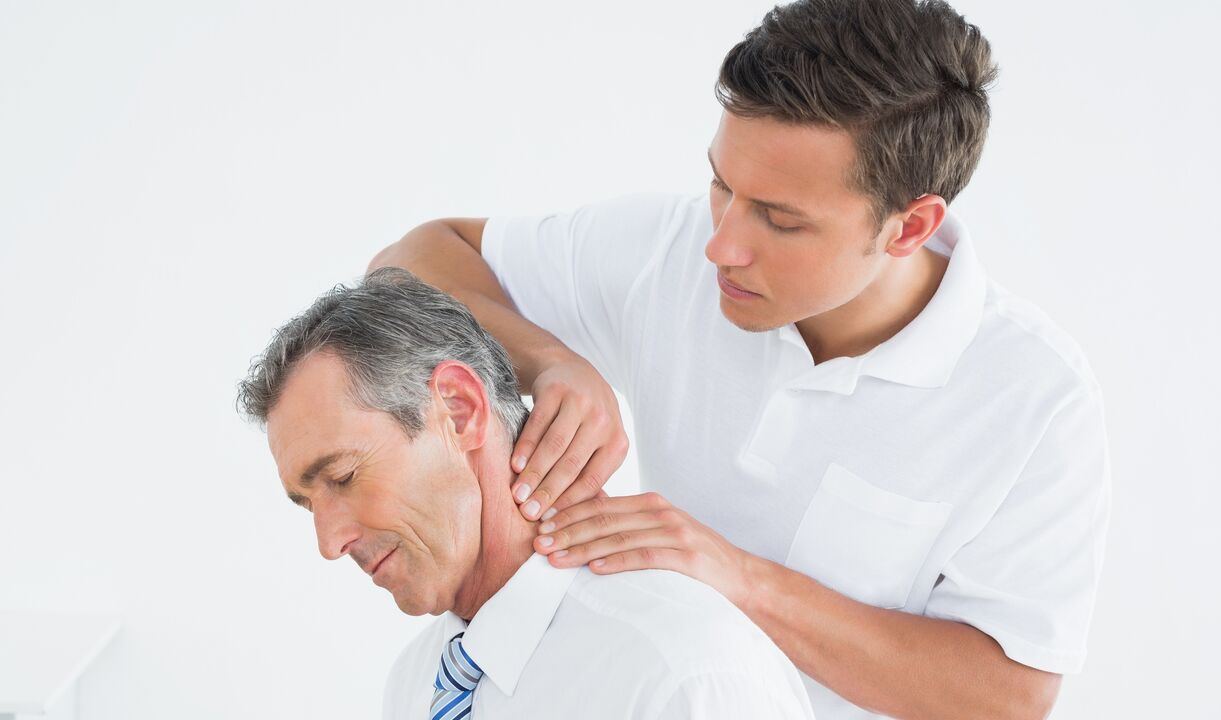Back and neck injuries, physical exertion, a sedentary lifestyle, pregnancy, old age - all these are causes of spinal disorders, the support of the human body. Symptoms of cervical, thoracic, or lumbar osteochondrosis vary, so any sign, even subtle, should not be ignored. The sooner treatment is started, the faster the recovery will be. If you notice the first signs of your disease, talk to your doctor and get tested.
What is osteochondrosis
One of the most diagnosed spinal diseases is osteochondrosis, which occurs in every 3 people after 35 years. It primarily affects overweight older adults, ex-athletes, or workers whose occupational activities are associated with heavy loads. According to statistics in recent years, it is clear that the disease is becoming younger. Girls and men who prefer a sedentary lifestyle no longer surprise doctors with complaints of back pain.
Osteochondrosis is a disease of the spine in which degenerative dystrophic lesions are present in the intervertebral discs. If left untreated, the vertebrae themselves can begin to break down, resulting in disability, atrophy and paralysis of the limbs. Such problems can also lead to spinal stroke, sciatica, kyphosis, herniation. At the first signs of illness, you need to seek help from your doctor.
Each degree of this spinal dystrophic disease has its own signs and symptoms. There are four stages in total. In the first stage, pathological changes occur, manifested by dehydration and reduced disc height. Second, the sagging of the muscles and ligaments of the vertebral body is repaired and spondylolisthesis is diagnosed (displacement, curvature of the disc). The third stage is characterized by prolapse and herniation of the intervertebral disc. In the final stage, the vertebrae are deformed and bone grows - osteophytes grow.
symptom
The signs and symptoms of osteochondrosis depend on the stage of development it is in. The type of disease also plays an important role. Osteochondrosis affects different parts of the spine: cervical, thoracic, and lumbar. Some signs in patients may not be related to the spine, such as heart or headache, numbness in fingers and toes. The patient also complained of neck pain or chest tingling. It is very important to seek help from the hospital. Treatment for the disease lasts about 3 months, plus a year of rehabilitation.
The most common symptoms of osteochondrosis:
- back pain between the shoulder blades;
- Dizziness;
- feeling like a lump in the throat;
- nausea;
- loss of sensation in the extremities;
- temperature rise;
- Numbness in the limbs.

cervical osteochondrosis
If we consider the signs in terms of the type of disease, problems with the cervical spine are dangerous due to their proximity to the brain. Here, the blood vessels that carry blood to the head partially overlap. The symptoms of cervical osteochondrosis are:
- Dizziness;
- cloudy eyes;
- noise in the ear;
- "drift" when walking;
- Pain in the back of the head, arms, and shoulders.
thoracic osteochondrosis
This type of disease affects the heart, so patients begin to complain of the following symptoms:
- chest, back, shoulder pain;
- heartache;
- angina pectoris;
- feeling like a lump in the throat;
- bouts of shortness of breath;
- tight breathing;
- Numbness in hands and feet.
lumbar osteochondrosis
Diseases that affect the lower spine can cause problems with the pelvic organs. Impaired sexual function. The symptoms of lumbar osteochondrosis are:
- coccyx, sacrum, lower back pain;
- Muscle spasms in thighs, calves, and buttocks;
- leg shot;
- numbness of the limbs;
- poor joint mobility;
- Exacerbation of diseases of the urogenital system.

Symptoms of migratory osteochondrosis
The concept refers to osteochondrosis, which develops in both parts of the spine, such as the cervicothoracic type of disease. In this case, the patient experiences signs of pain first in one location on the back and then in another, where the painful location moves. In this case, the patient can be diagnosed with a compromised cardiovascular system and can even take medication to treat the problem, which cannot be done without a physical exam.
signs of osteochondrosis
Depending on the impact of the disease, doctors distinguish between four groups of syndromes, each with its own symptoms. The syndromes of osteochondrosis are as follows:
- Static syndrome. The concept refers to changes in the shape of the spine. Posture Violation: A person begins to bend, bend over, and lower one shoulder under the other. Scoliosis occurs.
- Nervous System Syndrome. This disorder affects the nervous system. The person complains of tingling, numbness. Neurological symptoms develop into complications in the form of paralysis or seizures.
- Vascular syndrome. Here we are talking about the process of squeezing blood vessels through the vertebrae. This condition often occurs in the form of cervical disease. The result is a violation of blood circulation and a lack of oxygen to the brain, leading to cloudiness, dizziness, nausea, hearing and vision loss. In thoracic or lumbar osteochondrosis, chronic ischemia of internal organs is observed.
- nutritional syndrome. It is characterized by nutritional deficiencies of essential substances in the tissues. As a result, ulcers, inflammation and other defects appear on the skin.

first signs of osteochondrosis
During the initial and final stages of the disease, the patient does not experience any discomfort. Only a doctor can detect problems at this stage of development, for example when diagnosing another disease or during a physical exam. The diagnosis method is as follows:
- X-rays of the spine in two projections and, if necessary, of a single vertebra;
- Magnetic Resonance Imaging (to determine disc herniation, to assess spinal cord condition);
- Discography (to examine the discs);
- Electrophysical examination (to determine the extent of damage to neural pathways).























